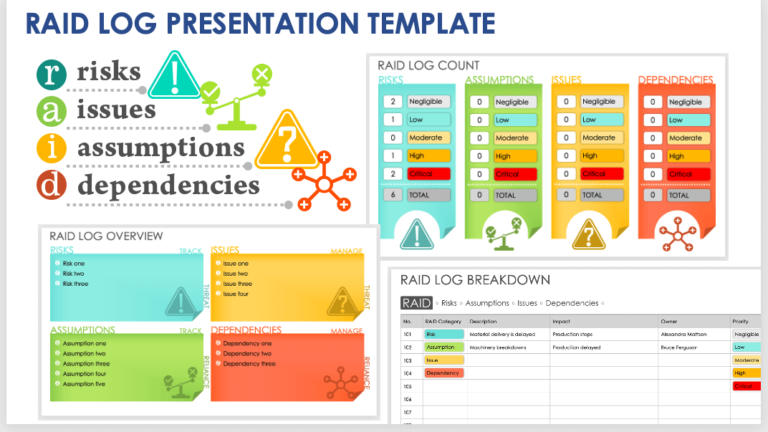
Raid Report: The Ultimate Guide
In today’s fast-paced operational environment, organizations and agencies alike rely on detailed documentation to assess and respond to unexpected events. A well-structured raid report can be the cornerstone of effective decision-making, ensuring that every critical detail is captured for future reference and analysis.
Introduction
In many industries, the ability to quickly analyze and respond to incidents is paramount. Whether in law enforcement, cybersecurity, or corporate risk management, a comprehensive approach to data collection and analysis is essential. In this context, producing a timely and accurate raid report serves as a critical tool that enables stakeholders to understand incident dynamics, pinpoint vulnerabilities, and plan corrective actions. By standardizing the reporting process, teams can ensure that no piece of evidence is overlooked, and every response is informed by a solid factual basis.
Detailed documentation also supports post-incident reviews, allowing for continuous improvement in strategies and protocols. The systematic recording of events, decisions, and outcomes in a raid report helps organizations develop a clearer picture of what went right—and what could be improved in future operations.
Benefits of a Raid Report
When organizations commit to thorough documentation, they reap numerous benefits that directly impact operational efficiency and strategic planning.
A meticulously prepared Report enables team leaders and decision-makers to review incidents with precision. Such reports often incorporate timelines, photographic evidence, and eyewitness accounts, ensuring that every aspect of the incident is comprehensively covered. This level of detail supports not only internal reviews but also legal or regulatory examinations when necessary.
Furthermore, by consolidating critical information into one central document, the report minimizes the risk of miscommunication between different departments. Cross-functional teams—ranging from security personnel to IT support—can easily access and interpret the data, which ultimately leads to faster, more coordinated responses during emergencies. As a result, organizations are better equipped to mitigate risks and ensure that any necessary adjustments to their operational procedures are based on reliable, well-documented facts.
The value of a solid report is also evident in its ability to serve as an educational resource. New team members and external auditors can study these reports to gain insights into effective crisis management practices, thereby reducing the learning curve and fostering a culture of transparency and accountability.
Implementing Strategies for Effective Data Analysis
Creating an effective report requires not only clear communication but also the integration of modern analytical tools. Today, organizations are increasingly leveraging advanced software to compile and assess data efficiently. By automating parts of the documentation process, teams can reduce human error and ensure consistency across multiple reports. For example, digital platforms enable the seamless aggregation of incident data, which can then be formatted into a clear raid report for immediate use.
Investment in the right technology can transform raw data into actionable insights. Sophisticated data analytics systems support the generation of a concise raid report by filtering out redundant information and highlighting key indicators. This process is invaluable in environments where rapid decision-making is essential. With real-time dashboards and alert systems, decision-makers can monitor unfolding events and compare them against historical data documented in previous report instances.
Moreover, proper training on these technological tools is crucial. Personnel must be well-versed in both the software’s capabilities and the underlying principles of effective data analysis. By understanding how to extract, interpret, and present data, staff can produce a report that is not only comprehensive but also tailored to meet the specific needs of their organization.
Real-World Applications of Data Analysis
Across various sectors, the practical applications of detailed incident reporting are numerous. In law enforcement, for example, an accurately documented raid report provides a clear account of operations, ensuring that all actions taken during a raid are recorded for legal review and future training purposes. This documentation is indispensable in judicial proceedings, where every detail can be scrutinized.
In the realm of cybersecurity, the frequency and sophistication of digital attacks necessitate a robust system for incident reporting. Here, the report becomes a vital instrument for mapping out the timeline of an attack, identifying compromised systems, and coordinating rapid remediation efforts. Cybersecurity teams rely on these reports to not only understand the immediate impact of breaches but also to refine their security measures and prevent future incidents.
Corporate environments are not left out either. Businesses facing internal security challenges or operational disruptions benefit immensely from the insights provided by a detailed report. These documents offer a post-mortem analysis that can drive policy changes, enhance employee training programs, and improve overall operational resilience. By regularly reviewing report data, companies can identify recurring issues and proactively address them before they escalate into more significant problems.
In emergency management, timely and accurate incident reports are critical. For instance, during natural disasters or other large-scale emergencies, emergency response teams use the report as a primary source of information to coordinate relief efforts, track resource allocation, and update stakeholders on evolving conditions. This systematic approach helps ensure that response strategies are both effective and adaptive to changing circumstances.
Across these varied applications, the underlying goal remains consistent: to foster an environment where continuous improvement is not only encouraged but enabled by accurate and actionable data. The insights derived from a comprehensive report are invaluable for driving innovation, refining processes, and ultimately ensuring that an organization is prepared for any eventuality.
Conclusion
Looking ahead, the role of detailed incident documentation will only become more significant. As organizations face increasingly complex challenges, the need for a precise and thorough raid report will grow in parallel with advancements in technology and analytics. By investing in robust reporting frameworks today, organizations can build a foundation for a more resilient and responsive future.
As emerging technologies such as artificial intelligence and machine learning become integral to data analysis, the way in which incident reports are generated and utilized will undoubtedly evolve. Future raid report systems may incorporate predictive analytics, allowing organizations to anticipate incidents before they occur. This proactive approach could revolutionize risk management, turning reactive measures into strategic planning initiatives that safeguard organizational assets and personnel.
Ultimately, the continued evolution of the raid report underscores a broader trend towards data-driven decision-making. In an era defined by rapid technological change and ever-growing security challenges, the capacity to document, analyze, and act upon critical incident data is a competitive advantage. Organizations that embrace these principles will not only be better prepared for future crises but will also set the standard for excellence in operational transparency and accountability.
In summary, the practice of compiling a thorough raid report is more than just an administrative task—it is a vital component of modern risk management and operational excellence. Through careful documentation, detailed analysis, and the integration of advanced technological tools, organizations can transform the challenges of incident response into opportunities for growth and improvement. Embracing the full potential of the raid report today paves the way for a safer, more informed, and ultimately more resilient tomorrow.
By continuously refining the process of incident documentation, organizations ensure that every detail is captured accurately and utilized effectively. The lessons learned from past experiences, as recorded in each raid report, become the building blocks for future success. As industries evolve and challenges become more multifaceted, the strategic importance of a comprehensive raid report remains unwavering—a testament to the power of meticulous analysis in driving meaningful change.



